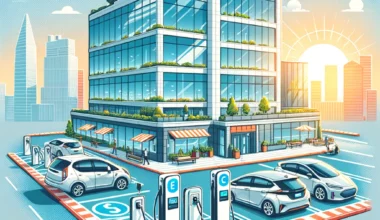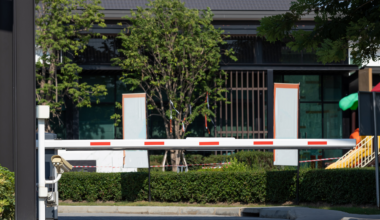For many employees, public transport is a way of life.
The train is how they get to and from work.
The bus is how they get around in their spare time.
At its best, public transport is great for the environment and cheap for commuters.
However, in many countries, commuters have a negative attitude to public transport.
They think it is undependable due to long journey times and indirect routes. Additionally, commuters complain about public transport being dirty, loud and unsafe. In some countries it can also be quite expensive.
Companies pay a premium to locate near public transport routes to improve accessibility. Yet, they are often disappointed with the low numbers of public transport commuters.
So, what can companies do to make public transport a more attractive option for their employees?
Improve your parking operations with sustainability in mind
Find out how Wayleadr can help you reduce your carbon footprint and promote sustainable practices
Get a DemoCost
A key barrier for many employees is the cost.
Offer big savings to incentivise people to leave their car at home. In many countries, public transport is heavily subsidised or free.
“If your city has very expensive public transport, employee allowances must be provided.”
Think about how much you spend each year to provide alternative travel facilities. Most companies can offer a large subsidy and still make an additional saving.
A robust commuter benefits scheme is a must. Increase savings by researching tax incentives available to employees who use public transportation. Commuter benefits ordinance schemes are becoming increasingly popular in US cities.
Densely populated areas like San Francisco roll out these schemes to tackle congestion.
Companies can team up with specialist companies like Commuter Benefits or WageWorks to implement. Employee commuter benefits are a growing area and will be appreciated by staff.
Flexibility
Bus and trains operate on set schedules. Imagine your company’s standard workday is 9 a.m. – 5.30 p.m. and you have an employee who lives 45 minutes away. Every day your employee is left with a choice.
They can either get the 7 a.m. bus and be 75 minutes early for work, or they can get the 8.30 a.m. bus and be 15 minutes late.
Yet, the earlier bus, after time, will leave them exhausted.
The rigidity of the public transport system causes conflict for many commuters. Some employees will be vocal about this issue. Alternative arrangements can be made.
Ensure your employees are not frustrated with their commutes. Ask every staff member as part of inductions and reviews if their hours cause them issues. Cultivating a culture of understanding around commuting challenges becomes valued by your staff.
Offering emergency parking benefits for staff who normally take public transport is also a great incentive. This means staff know they can access a parking space if they really want one.
Travel Groups
High crime rates, unsafe routes or negative experiences make many bus or train commutes quite daunting.
A great way to overcome fears is to create formal or informal travel groups.
This is not dissimilar to carpooling. Identify people who share routes and connect them so they can travel together. Sharing journeys improves feelings of security and also establishes community within the workplace.
Multi-Modal Initiatives
Many companies are located just a little far away from the nearest transport hub.
Embrace multi-modal initiatives. Make it easier for your staff to still make large parts of the journey using public transport.
Motivate employees to complete journeys via Park & Bike schemes. Suddenly, using public transit becomes less daunting. Companies can also run shuttles from local transport hubs to the workplace. This takes the burden of the last mile off of your employees.
These are just some tips on reducing your company’s car dependency. You can find other support on this topic by reading our guides on growing running, walking, cycling and public transport at work.
Looking to reduce your commuter carbon footprint? Check out this blog – How employers are using parking software to fight climate change
Futureproofing your commuter culture isn’t just good for the environment, it also can save a lot of money for your business. Learn more with this blog – Reduced costs to environmental benefits: how last mile automation can help your business
Schedule a demo with Wayleadr today and solve your parking problems with the click of a button.
Improve your parking operations with sustainability in mind
Find out how Wayleadr can help you reduce your carbon footprint and promote sustainable practices
Get a DemoWhat do the commutes of the future look like? Discover more with this blog – How last mile automation can change driving culture at your workplace



